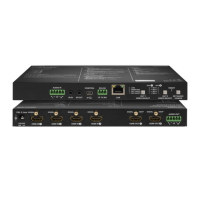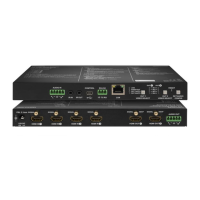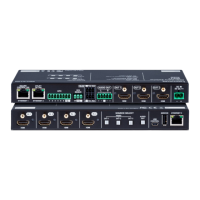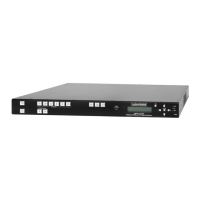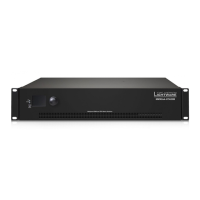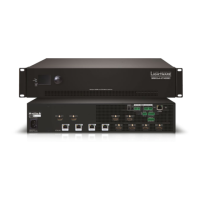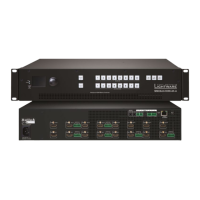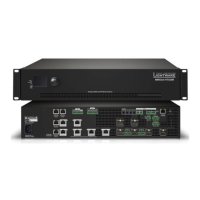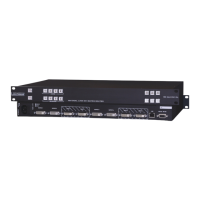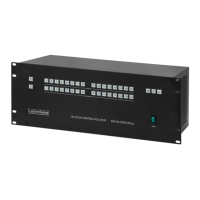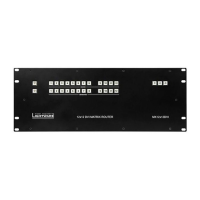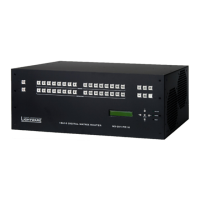MMX4x2 series – User's Manual 91
Changing the Autoselect Mode
Command and Response
ç <out>:<state><mode>)
æ
Parameters
See the previous section. Please note that the mode setting cannot be changed when D is sent to change
the state to Disabled.
INFO: Both or just one parameter can be set as shown in the example below.
Examples
ç
æ
The Autoselect is switched off on output1, the mode setting is not changed. The Autoselect is switched on
Command and Response
ç
æ
<out1_list>;<out2_list>
The response shows the priority of each output one after another. The priority number can be from 0 to 3; 0
is the highest- and 3 is the lowest priority.
Parameters
The <out#_list> parameters are the order of the input port priority numbers of the given output port. The
structure of these groups is the following:
<out#_list> = <in1_prio>,<in2_prio>,<in3_prio>,<in4_prio>
Example
ç
æ
There are two outputs, so two groups are listed in the response (divided by semicolons) and each group (list)
contains four priority numbers. The values show the priority order of the video input ports:
Output 1 Output 2
<in1_prio> <in2_prio> <in3_prio> <in4_prio> <in1_prio> <in2_prio> <in3_prio> <in4_prio>
0 1 2 3 1 0 2 3
In the example above, the input 1 has the highest priority on output 1 and input 4 has the lowest priority. On
output 2: the highest priority is assigned to input 2 and the lowest is input 4.
ATTENTION!
match, the input port with the lowest port number will have the highest priority.
Changing the Input Port Priority
Command and Response
ç
(<in>(<out>):<prio>)
æ
Parameters
The <prio> parameter means the priority number from 0 to 3, equal numbers are allowed. An input port
priority can be set on an output port. More parameters can be placed by using a semicolon (no space), see
the example below.
Examples
ç
æ
The priority number of input 1 has been set to 3 on output 1; the priority number of input 2 has been set to
2 on output 1.
ç
æ
The priority number of input 1 has been set to 3 on output 1. The example shows that certain control
more information about the escaping in the Escaping section.
Muting an Input Port
Command and Response
ç
<in>)
æ
Example
ç
æ
Unmuting an Input Port
Command and Response
ç
<in>)
æ
Example
ç
æ

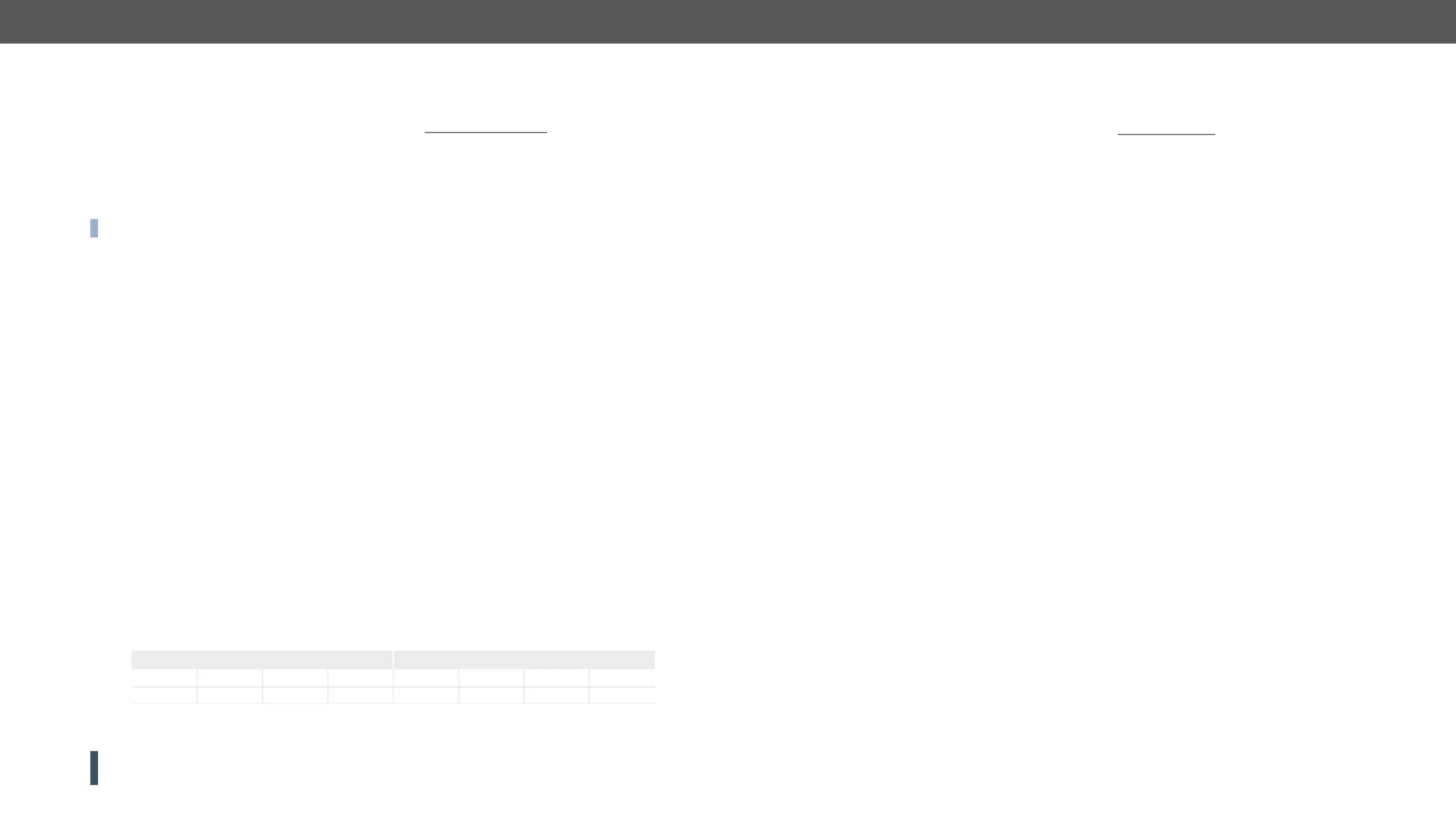